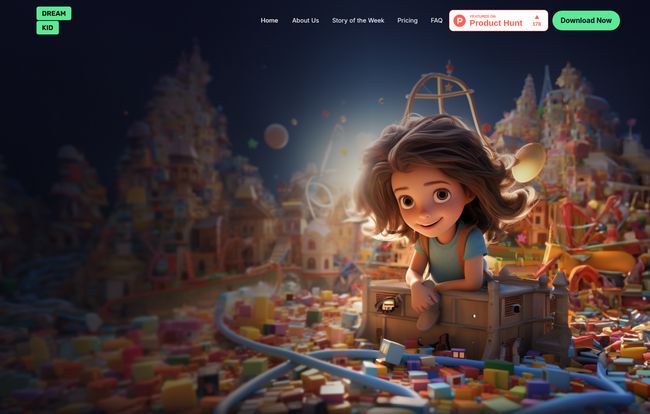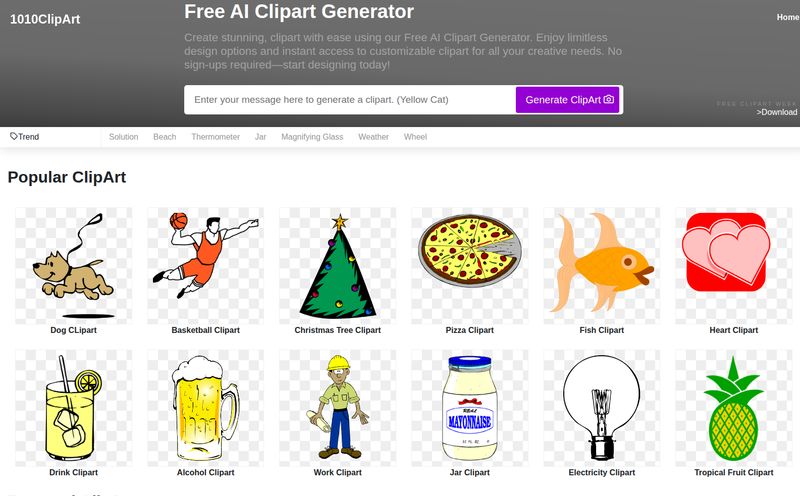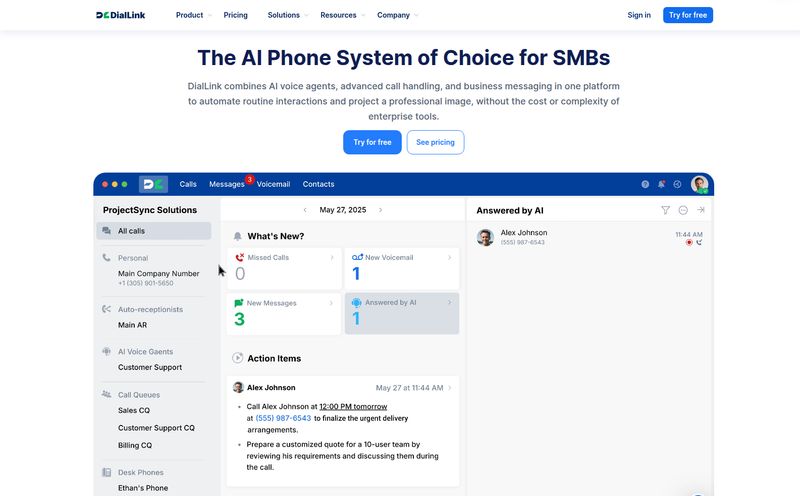As someone who lives and breathes SEO, CPC, and the ever-churning world of digital trends, I see a lot of AI tools. Every single day. Most are just thin wrappers around the same old APIs, promising to revolutionize your workflow or 10x your output. It gets a bit... samey. My default setting has become a healthy, well-earned skepticism.
But every now and then, something cuts through the noise. Something that isn't about optimizing ad spend or writing another listicle. Something that actually feels like it has a soul. And that, for me, was stumbling upon Dream Kid AI. It’s an AI storyteller, but that description feels woefully incomplete. This isn't just about generating bedtime stories; it's about crafting digital life rafts for some of the bravest people I know: kids in hospitals.
So, I decided to put my usual cynicism on a shelf and really look at what this platform is all about. Is it just clever marketing, or is there some real magic here?
What Exactly is Dream Kid AI?
At its core, Dream Kid AI bills itself as the world's first AI storyteller that writes, narrates, and illustrates books for children navigating medical challenges. Think of it less like a simple app and more like a digital Mary Poppins, ready to fly in with a story that’s part adventure, part therapy. The entire point is to take scary, confusing medical situations—the beeping machines, the strange words, the fear—and translate them into understandable, empowering narratives.
It’s designed to transform a sterile hospital room into the setting for an epic quest, turning a tough moment into an adventure. For a parent who's running on fumes and a child who's feeling small and scared, that's a pretty powerful promise.
The Magic Behind the Curtain: How It All Works
I'm a process guy, so I always appreciate when a tool doesn't make you jump through a dozen hoops. The team behind Dream Kid AI clearly understood that parents in these situations have zero time for a complicated user interface. The process is brilliantly simple, broken down into three steps.
- Create a Profile: This is the personalization engine. You input your child's name, age, and the challenges they’re facing. This isn't just for show; it's the raw material the AI uses to build the story's foundation.
- Choose a Story Setting: Here’s where the fun starts. Your child can pick their own amazing world to explore. An underwater kingdom? A city built from giant books? They get to decide. This little bit of control can mean the world to a kid who feels like they have none.
- Bring Your Story to Life: Then, you just hit the button. The AI gets to work, weaving your child's details into the chosen setting, creating a unique story from scratch. You can read it together or let the built-in AI narration take over, complete with beautiful, Pixar-esque illustrations on every page.
And that’s it. Seriously. From a user experience perspective, it’s slick. They’ve removed nearly all the friction, which is exactly what you need in a high-stress environment.

Visit Dream Kid AI
Why This Isn't Just Another Story App
So, we've established it's easy to use and has a noble mission. But what makes it effective? I think it boils down to a few key things that set it apart from a generic story generator.
The Therapeutic Angle is Everything
This is the secret sauce. The stories aren't just random adventures; they're clever allegories. A story might feature a brave knight whose armor needs a special polish (chemotherapy) or a magical tree that needs a little pruning to grow stronger (surgery). By using metaphors, Dream Kid AI demystifies the medical journey. It reframes treatment not as something scary being done to a child, but as a challenge they are actively overcoming as the hero of their own tale. That shift in perspective is incredibly powerful for building courage and resilience.
A Genuinely Multi-Sensory Experience
We've all seen AI-generated images that look a bit... off. Wonky hands, weird textures. The art in Dream Kid AI, however, is consistently stunning. It’s warm, vibrant, and full of emotion. When you combine these visuals with the AI narration and the written story, you get something that engages multiple senses. It's an immersive experience that can truly transport a child out of their current surroundings for a few precious minutes. It's one thing to read a story; it's another to see and hear it come alive, with you as the main character.
Personalization That Actually Matters
Putting a child’s name in a story is an old trick. But this goes deeper. By weaving in their specific challenges, the story becomes theirs. They aren't just reading about a generic hero; they are the hero. In a world that's making them feel like a patient or a diagnosis, this platform reminds them that they are still a protagonist, the star of their own incredible journey.
Let's Talk Turkey: The Dream Kid AI Pricing
Alright, nothing is ever truly free, right? So how does the business model work? It's actually very straightforward and, in my opinion, pretty fair. They use a freemium model.
| Plan | Price | Features |
|---|---|---|
| Free Trial | Free | 2 Free Stories, AI audio, and colorful images. |
| Additional Story | €3.99 per story | Full access to generate a new, complete story. |
You get to create two full stories completely free. This is more than enough to see if it connects with your child. After that, each new story costs €3.99. Some might balk at paying per story, but let's put it in perspective. That's less than the cost of a fancy coffee or a flimsy paperback kids book from the supermarket. For a completely personalized, illustrated, and narrated experience designed to bring comfort during a difficult time... I'd say that’s a pretty good value proposition.
The Human Touch vs. The AI Quill
Now for the elephant in the room. Can an algorithm truly replace the warmth of a parent reading a story? Can it capture the subtle nuances of human emotion and storytelling? The short answer is no. Of course not. And I don’t think it’s trying to.
This is one of the listed 'cons'—a reliance on AI that might miss that special human spark. And that’s a valid point. But I think viewing it as a replacement is the wrong frame of mind. Dream Kid AI is a supplement. It's a tool in the emotional first-aid kit. It's for that moment at 3 a.m. when a child is awake and scared, and the parent is so exhausted they can barely see straight. It's a new adventure when you've read Goodnight Moon for the 400th time. It's not there to replace the parent on the bedside, but to give them a new, powerful tool to use in that moment.
So, Who is This Really For?
The primary audience is obvious: parents, family, and caregivers of children in a hospital or with a long-term medical condition. It's purpose-built for them.
But I can easily see its application expanding. What about kids with severe anxiety about a simple doctor's visit or a trip to the dentist? A story that frames the dentist as a 'tooth wizard' polishing their 'smile gems' could work wonders. Or for a child struggling with a fear of the dark or starting a new school. The therapeutic storytelling framework is adaptable. I could even see child life specialists in hospitals using this as part of their toolkit to help prepare kids for procedures. The potential is definitely there.
Final Thoughts from a Jaded SEO Guy
I came into this expecting to be unimpressed. I left feeling... hopeful. In a tech landscape that often feels extractive and cynical, Dream Kid AI is a reminder that technology can be built with compassion at its core. It’s not a perfect system, and it will never replicate a parent’s hug. But it doesn't have to.
It’s a beautifully designed, easy-to-use platform that offers a creative, comforting, and empowering experience for kids when they need it most. It's a spark of light in a scary place. And for that reason alone, it’s a tool that I'm genuinely excited about. It's a fantastic example of AI for good, and honestly, we need a lot more of that.
Frequently Asked Questions
- Is Dream Kid AI really free?
- Yes, you can get started for free. Your first two personalized stories are on the house, which includes the AI generation, narration, and illustrations. After that, you pay per story.
- Can I use this for a child who isn't in the hospital?
- Absolutely. While it was designed with hospitalized children in mind, its therapeutic storytelling approach is perfect for any child facing a scary or anxious situation, like a dentist visit, starting school, or even just a fear of the dark.
- How does the story personalization work?
- You provide your child's name, age, and some details about their challenges. The AI then uses this information to cast your child as the main character and weaves metaphors for their challenges into the narrative of the story you choose.
- Is the AI voice narration robotic?
- While AI voices have come a long way from the classic robotic tones, they still have a certain AI quality. However, the platform focuses on a clear, soothing, and engaging narration style designed for children, making the multi-sensory experience very effective.
- Can I get a printed, physical copy of the book?
- Currently, Dream Kid AI is a digital experience delivered through the app. There's no option for physical printing, as the focus is on the in-the-moment, multi-sensory experience with audio and on-screen visuals.
- What makes the stories 'therapeutic'?
- The therapeutic power comes from using metaphors and allegories. Instead of talking directly about a scary medical procedure, the story might talk about a magical potion or a special quest. This reframes the experience, reducing fear and empowering the child by making them the hero of the story.



